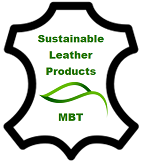A Guide to Choosing the Perfect Imports for Your Store
Importing leather goods for your retail store is an exciting venture, offering the potential to bring in high-quality products that appeal to a diverse customer base. However, with a multitude of options available, it’s essential to navigate the market wisely to ensure that you select the perfect leather goods for your store. Here’s a comprehensive guide to help you make informed decisions and curate a collection that resonates with your customers.
-
Identify Your Target Audience
Understanding your customer base is the first step in choosing the right leather goods for import. Consider factors such as demographics, lifestyle, and preferences. Are you targeting a fashion-forward clientele, outdoor enthusiasts, or those seeking classic, timeless pieces? This insight will guide your selection process and ensure that the imported goods align with your customers’ needs and tastes.
-
Quality Matters
The hallmark of exceptional leather goods is quality craftsmanship. When sourcing products for your store, prioritize suppliers with a reputation for producing high-quality items. Examine the stitching, finishing, and overall construction of the leather goods. Quality not only enhances the longevity of the products but also reflects positively on your brand’s image.
-
Diverse Product Range
Offering a diverse range of leather goods allows you to cater to a broader customer base. Consider importing a mix of products, including but not limited to:
- Bags and Backpacks: From stylish handbags to functional backpacks, leather accessories are versatile and always in demand.
- Footwear: Leather shoes and boots are perennial favorites, combining fashion with functionality.
- Wallets and Accessories: Small leather goods like wallets, belts, and key holders are often impulse buys and can appeal to a wide audience.
- Apparel: Leather jackets, vests, and accessories add a touch of sophistication to your inventory.
-
Stay Informed on Trends
The world of fashion and design is ever-evolving. Keep a close eye on current trends in the leather industry. Understanding popular colors, textures, and styles will help you select products that resonate with your target market. Attend trade shows, follow industry publications, and keep an eye on what competitors are offering to stay ahead of the curve.
-
Assess Supplier Reputation
Choosing the right suppliers is crucial to the success of your import venture. Research and vet potential suppliers thoroughly. Look for established manufacturers with a track record of reliability and ethical practices. Request samples to assess product quality firsthand, and inquire about their production processes to ensure they align with your values and standards.
-
Consider Sustainable Options
Incorporating sustainability into your product selection can appeal to a growing segment of environmentally conscious consumers. Look for suppliers who prioritize ethical sourcing, eco-friendly production methods, and sustainable leather alternatives.
-
Price Point and Profit Margins
Carefully evaluate the pricing of the leather goods you plan to import. Consider factors such as production costs, shipping fees, and import duties. Striking a balance between offering competitive prices and maintaining healthy profit margins is crucial for the long-term success of your retail business.
Conclusion
Importing leather goods for your store is an exciting opportunity to curate a unique and appealing collection. By understanding your target audience, prioritizing quality, diversifying your product range, staying informed on industry trends, selecting reputable suppliers, considering sustainability, and managing price points effectively, you can confidently navigate the world of leather imports and create a compelling retail experience for your customers.


Add a Comment